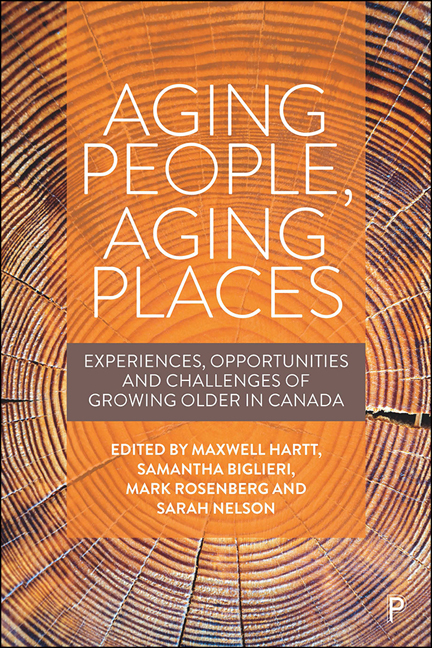7 - An age-friendly city? LGBTQ and frail older adults
Published online by Cambridge University Press: 18 December 2021
Summary
In Saskatoon, Saskatchewan, and across Canada, an aging demographic is changing the way communities function. We are faced as well by an increasingly diverse community, where identities, abilities, and lived experiences stand to impact the ways in which older adults interact both socially and physically with the urban environment (Rosenberg and Everitt, 2001; Kobayashi et al, 2011). While aging changes the experience of daily life, the intersection of age and diversity can compound these experiences, subjecting older adults to a ‘double jeopardy’ (Rosenberg and Everitt, 2001) in accessing important spaces, services, and opportunities for health and wellbeing.
Popularized by the World Health Organization's Age-Friendly Cities Guide (2007), age-friendly community development encompasses an approach to the physical, social, and political fabric of cities that includes a careful consideration of older adult lived experience (Greenfield et al, 2015). Beyond the more traditional age-friendly service pillars of housing, transportation, healthcare, and recreation, age-friendly development theory has included consideration of social capital as a foundational component to healthy and sustainable aging infrastructure (Buffel et al, 2012; Lager et al, 2015). Fostered through social networks and the physical proximity to others of similar circumstances, social capital – particularly as it relates to older adults – can encourage an improved sense of community belonging, wellbeing, and support (Putnam, 1995).
Problem
We pose the question: What would an age-friendly community look like for older adults who belong to the most marginalized groups in society? This chapter examines the experiences of two of the most at-risk or isolated communities among the overall older adult population in Saskatoon, Saskatchewan; namely, members of the LGBTQ community, and those experiencing physical or cognitive frailty. Saskatoon is Saskatchewan's largest city, with a population of roughly 270,000. Over 80% of its footprint has developed in a suburban pattern, mostly automobile-oriented (Gordon et al, 2018). Amplifying the voices of more vulnerable older adults addresses heightened experiences with ‘civil risk’ (Kobayashi and Ray, 2000) faced by those whose identity characteristics stand to increase their exclusion from mainstream institutions and perpetuate their social and spatial marginalization in older age. By investigating community support dynamics within these two marginalized older adult populations, one of our objectives is to better understand the function of ‘bonding social capital’ (ie support among those with similar group identities) in intersectional aging environments (Helliwell and Putnam, 2004).
- Type
- Chapter
- Information
- Aging People, Aging PlacesExperiences, Opportunities and Challenges of Growing Older in Canada, pp. 89 - 108Publisher: Bristol University PressPrint publication year: 2021



